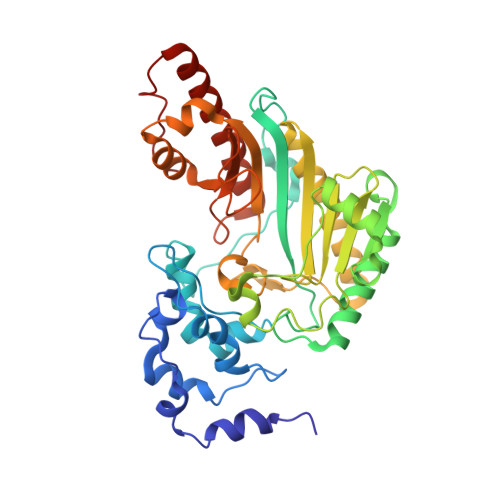Structural asymmetry and intersubunit communication in muscle creatine kinase
Ohren, J.F., Kundracik, M.L., Borders Jr, C.L., Edmiston, P., Viola, R.E.(2007) Acta Crystallogr D Biol Crystallogr 63: 381-389
- PubMed: 17327675
- DOI: https://doi.org/10.1107/S0907444906056204
- Primary Citation of Related Structures:
1U6R - PubMed Abstract:
The structure of a transition-state analog complex of a highly soluble mutant (R134K) of rabbit muscle creatine kinase (rmCK) has been determined to 1.65 A resolution in order to elucidate the structural changes that are required to support and regulate catalysis. Significant structural asymmetry is seen within the functional homodimer of rmCK, with one monomer found in a closed conformation with the active site occupied by the transition-state analog components creatine, MgADP and nitrate. The other monomer has the two loops that control access to the active site in an open conformation and only MgADP is bound. The N-terminal region of each monomer makes a substantial contribution to the dimer interface; however, the conformation of this region is dramatically different in each subunit. Based on this structural evidence, two mutational modifications of rmCK were conducted in order to better understand the role of the amino-terminus in controlling creatine kinase activity. The deletion of the first 15 residues of rmCK and a single point mutant (P20G) both disrupt subunit cohesion, causing the dissociation of the functional homodimer into monomers with reduced catalytic activity. This study provides support for a structural role for the amino-terminus in subunit association and a mechanistic role in active-site communication and catalytic regulation.
Organizational Affiliation:
Department of Chemistry, The University of Toledo, Toledo, Ohio 43606, USA.


















